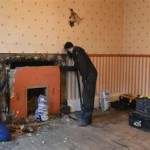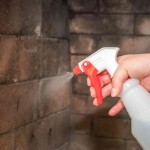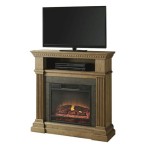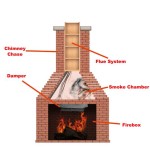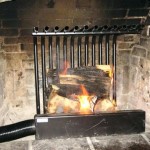How to Build a Patio Fireplace: A Comprehensive Guide
A patio fireplace offers a focal point for outdoor living spaces, providing warmth, ambiance, and a gathering spot for entertainment. Constructing a patio fireplace is a significant undertaking that requires careful planning, adherence to local building codes, and diligent execution. This guide details the essential steps involved in building a safe and aesthetically pleasing patio fireplace.
Planning and Preparation
Before beginning construction, a thorough planning phase is crucial. This involves considering various factors, including location, design, materials, and necessary permits. The selected location should be a safe distance from flammable materials, such as trees, fences, and overhanging structures. Furthermore, prevailing wind patterns should be taken into account to minimize the impact of smoke on nearby residents or structures. Ensure adequate space is available for seating around the finished fireplace.
Design considerations are equally important. Patio fireplaces can range from simple, functional structures to elaborate, decorative features. The design should complement the existing architecture of the house and landscape. Research various fireplace designs and select one that aligns with personal preferences and functional requirements. Consider factors such as the height, width, and depth of the firebox, as well as the style of the chimney or flue. A well-proportioned fireplace will be both aesthetically pleasing and functional.
Material selection is another critical aspect of the planning phase. Common materials for building a patio fireplace include brick, stone, concrete blocks, and stucco. Brick and stone offer a classic, durable look, while concrete blocks provide a more cost-effective option. Stucco can be applied over concrete blocks to create a smooth, modern aesthetic. The chosen materials should be fire-resistant and able to withstand the rigors of outdoor exposure. It is essential to calculate the quantity of materials required to avoid shortages during construction. Purchasing slightly more than the calculated amount is advisable to account for waste and potential errors.
Finally, obtaining necessary permits is paramount. Contact the local building department to determine the specific permits required for constructing a patio fireplace. Building codes vary significantly depending on location, and failure to comply with these codes can result in fines and delays. The permitting process often involves submitting detailed plans of the proposed fireplace, including dimensions, materials, and elevation views. Adhering to all local building codes ensures the fireplace is constructed safely and legally.
Construction Process
The construction process begins with preparing the foundation. A solid, level foundation is essential for the stability and longevity of the fireplace. The foundation should extend beyond the footprint of the fireplace to provide adequate support. Excavate the area for the foundation to the required depth, typically around 12 inches. Pour a concrete slab reinforced with rebar to create a stable base. Allow the concrete to cure completely before proceeding with the construction of the fireplace.
Once the foundation is cured, begin laying the first course of bricks or stones. Use a level and plumb line to ensure the initial course is perfectly level and square. This is crucial for maintaining the structural integrity of the fireplace. Apply mortar generously between each brick or stone, ensuring a strong bond. Stagger the joints between courses to create a more stable and visually appealing structure. As the walls of the firebox rise, ensure the dimensions match the planned design. It is advisable to dry-fit the bricks or stones before applying mortar to ensure a proper fit and aesthetic alignment.
The firebox is a critical component of the patio fireplace. Line the firebox with firebricks, which are designed to withstand the high temperatures generated by the fire. Firebricks are typically thicker and denser than regular bricks and are specifically formulated to resist cracking and spalling. Use fireclay mortar to adhere the firebricks to the inside walls of the firebox. The firebox should be adequately sized to accommodate the desired size of the fire. Consider incorporating a metal fire grate to elevate the fire above the floor of the firebox, allowing for better airflow and combustion.
Constructing the chimney or flue is a crucial step in ensuring proper ventilation and smoke exhaust. The chimney should be tall enough to create adequate draft and prevent smoke from blowing back into the patio area. The interior of the chimney should be smooth and free of obstructions to facilitate the smooth flow of smoke. Line the chimney with clay flue tiles or a stainless-steel liner to protect the surrounding structure from heat and corrosion. Install a spark arrester at the top of the chimney to prevent embers from escaping and potentially causing a fire.
Finishing Touches and Safety Considerations
Once the main structure of the fireplace is complete, focus on adding finishing touches. This may involve applying stucco, installing decorative stone or brick veneer, or adding a mantel. The choice of finishing materials should complement the overall design of the patio and the surrounding landscape. Ensure that all materials are properly installed and sealed to prevent moisture from penetrating the structure. Consider adding a protective coating to the fireplace to protect it from the elements.
Safety is paramount when building and using a patio fireplace. Always follow safe construction practices and wear appropriate safety gear, such as gloves, eye protection, and a dust mask. Ensure the fireplace is properly ventilated and that the chimney is free of obstructions before lighting a fire. Never leave a fire unattended and always extinguish it completely before leaving the area. Keep flammable materials away from the fireplace and ensure that children and pets are supervised when a fire is burning.
Regular maintenance is essential for ensuring the longevity and safety of the patio fireplace. Inspect the fireplace regularly for cracks, loose bricks, or other signs of damage. Repair any damage promptly to prevent further deterioration. Clean the chimney regularly to remove soot and creosote, which can accumulate and pose a fire hazard. By following these safety precautions and maintenance guidelines, the patio fireplace can provide years of enjoyment and warmth.

How To Build An Outdoor Fireplace Step By Guide Buildwithroman

How To Build An Outdoor Fireplace Today S Creative Life

How To Build An Outdoor Fireplace Step By Guide Buildwithroman

How To Build An Outdoor Fireplace Using A Kit Tips Guidelines

Diy Building An Outdoor Fireplace

How To Build An Outdoor Fireplace Firefarm Living

Turn Your Patio Into A Cozy Getaway With An Outdoor Fireplace

Saguaro Diy Outdoor Fireplace Plan
:max_bytes(150000):strip_icc()/chrisjulia-971f3f9eb708447bbd364fc7f4a16280.jpg?strip=all)
10 Free Outdoor Fireplace Construction Plans

How We Built Our Outdoor Fireplace Chris Loves Julia
Related Posts


